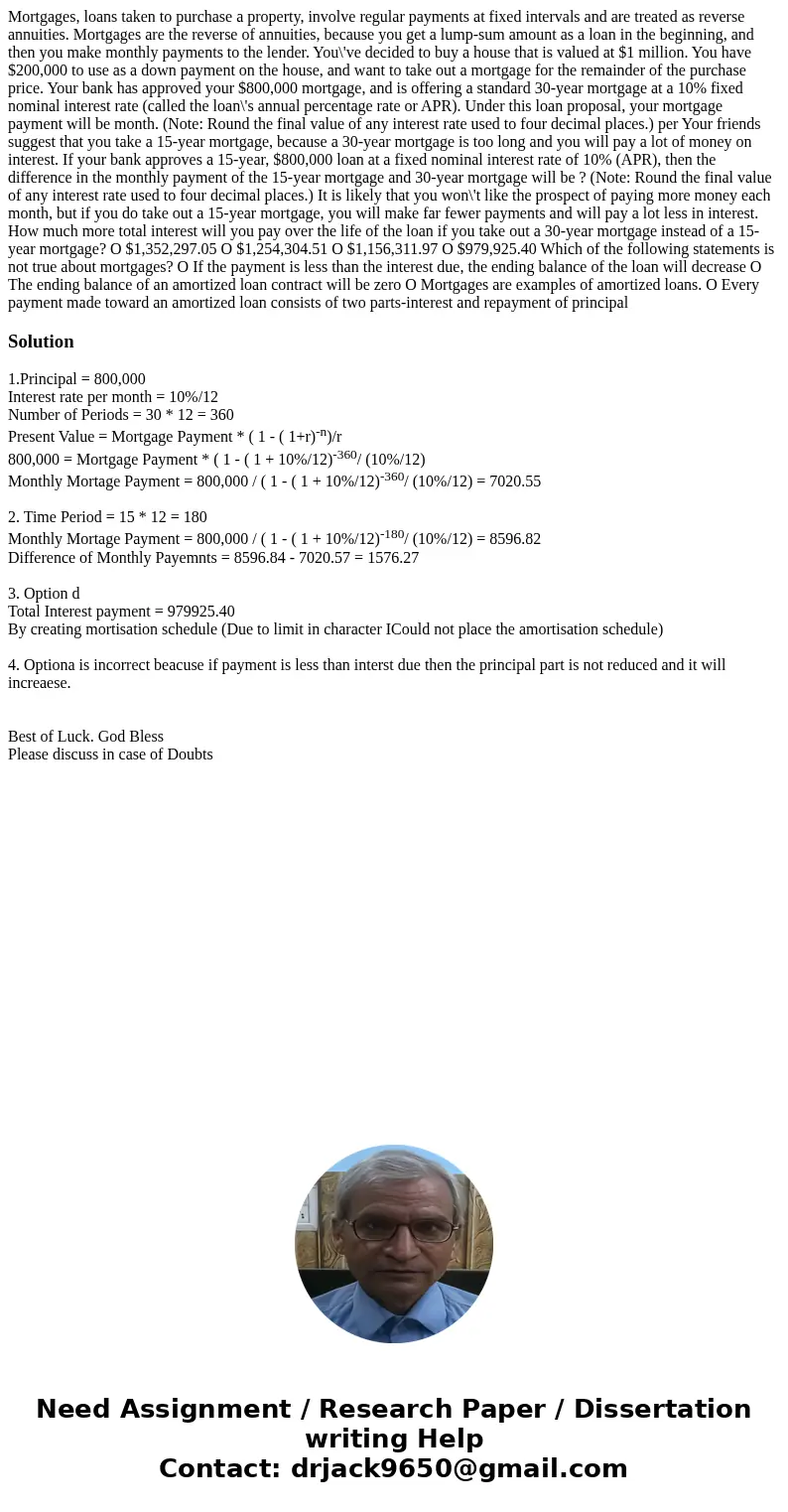Mortgages, loans taken to purchase a property, involve regular payments at fixed intervals and are treated as reverse annuities. Mortgages are the reverse of annuities, because you get a lump-sum amount as a loan in the beginning, and then you make monthly payments to the lender. You\'ve decided to buy a house that is valued at $1 million. You have $200,000 to use as a down payment on the house, and want to take out a mortgage for the remainder of the purchase price. Your bank has approved your $800,000 mortgage, and is offering a standard 30-year mortgage at a 10% fixed nominal interest rate (called the loan\'s annual percentage rate or APR). Under this loan proposal, your mortgage payment will be month. (Note: Round the final value of any interest rate used to four decimal places.) per Your friends suggest that you take a 15-year mortgage, because a 30-year mortgage is too long and you will pay a lot of money on interest. If your bank approves a 15-year, $800,000 loan at a fixed nominal interest rate of 10% (APR), then the difference in the monthly payment of the 15-year mortgage and 30-year mortgage will be ? (Note: Round the final value of any interest rate used to four decimal places.) It is likely that you won\'t like the prospect of paying more money each month, but if you do take out a 15-year mortgage, you will make far fewer payments and will pay a lot less in interest. How much more total interest will you pay over the life of the loan if you take out a 30-year mortgage instead of a 15-year mortgage? O $1,352,297.05 O $1,254,304.51 O $1,156,311.97 O $979,925.40 Which of the following statements is not true about mortgages? O If the payment is less than the interest due, the ending balance of the loan will decrease O The ending balance of an amortized loan contract will be zero O Mortgages are examples of amortized loans. O Every payment made toward an amortized loan consists of two parts-interest and repayment of principal
1.Principal = 800,000
Interest rate per month = 10%/12
Number of Periods = 30 * 12 = 360
Present Value = Mortgage Payment * ( 1 - ( 1+r)-n)/r
800,000 = Mortgage Payment * ( 1 - ( 1 + 10%/12)-360/ (10%/12)
Monthly Mortage Payment = 800,000 / ( 1 - ( 1 + 10%/12)-360/ (10%/12) = 7020.55
2. Time Period = 15 * 12 = 180
Monthly Mortage Payment = 800,000 / ( 1 - ( 1 + 10%/12)-180/ (10%/12) = 8596.82
Difference of Monthly Payemnts = 8596.84 - 7020.57 = 1576.27
3. Option d
Total Interest payment = 979925.40
By creating mortisation schedule (Due to limit in character ICould not place the amortisation schedule)
4. Optiona is incorrect beacuse if payment is less than interst due then the principal part is not reduced and it will increaese.
Best of Luck. God Bless
Please discuss in case of Doubts

 Homework Sourse
Homework Sourse